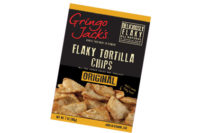By: Crystal Lindell
For many the words “Twizzlers” and “Red Vines” have been synonymous with licorice for decades.
But all that is changing now as consumers look to premium brands, different textures and all the flavors of the rainbow - even black.
With at least one trend in licorice, Australian-style, the thought process is mostly, if it’s new to you, then it’s new.
For example, Australian-style liquorice company Kookaburra Licorice Co., has been distributing in the U.S. for about 14 years, but their main product - a soft chew liquorice from the founders’ native country - is still a emerging trend.
“It takes quite a long time to get it out there and for people to know about,” explains Phillip Cook, one of the owners of the company, which is based in Monroe, Wash.
He adds that the trade shows help though.
“[But] people come along and say, ‘How come I’ve never seen you before?’” he says. “There’s just a lot of people in the U.S. [so] a lot of people know about it, but a lot of people don’t.”
Cook says once people try it though, they don’t regret it.
“We certainly do have followers,” he says. “People are virtually addicted to the stuff.”
He notes there’s two fundamental differences between mainstream American licorice and his product.
“The first is the textures. It’s a soft eating confectionery experience,” he explains. “The second is the flavor. When you eat our strawberry versus aRed Vine or a Twizzler, you’ll notice it really jumps out at you.”
Other companies are catching on. In fact, even the Union-City, Ca., American Licorice Company, which owns Red Vines, is marketing a soft licorice product - Natural Vines.
“We definitely think there’s a place for Red Vines, but we want to have an alternative,” explains Michael Kelly, consumer communications manager with American Licorice Company.
He describes the product as being like a fruit chew.

Donald Cook, president of Morristown, N.J.-based International Foods Associates, which distributesDarrell Lea Soft Eating Licorice, says the style is definitely starting to emerge as mainstream.
“When consumers were finally exposed to it, they realized that there was something different and from our perspective something that’s a better quality product than what had traditionally been offered to them,” he says. “Much like premium chocolate bars... they’re willing to pay that extra for it because it’s a fundamentally different taste experience.”
His company currently offers the soft licorice in black, strawberry, mango, and green apple.
The new trend also has been growing as consumers become more aware of what they’re eating, Kelly says.
“[They’re] more and more conscious of the ingredients that go into their foods,” he explains. “They’re concerned about things like high fructose corn syrup.”
Improvements to the food distribution system for gourmet confections also has helped spread the trend.
“The whole network of buyers and distributors has gotten a lot more advanced... in the last ten years,” Kelly says.
Meanwhile, traditional black licorice also is finding its niche.
Some, such Elizabeth Erlandson, a co-owner of Lincoln, Neb.-based Licorice International, argue that anything but black licorice isn’t licorice at all.
“Licorice is a flavor,” she argues. “So when you ask if there’s other new flavors coming, [no]. There [just] are other new candies that are shaped in a twist form, that we would associate with licorice.”
Many claim real licorice extract also has health benefits, from calming the stomach to being good for the adrenal glands and helping with acid reflux.
“There’s a lot of healthy benefits,” Erlandson says. “And it really is very low calorie.”
Donald Cook says he the black flavor is more of an adult confection, but it’s a popular one.
“If we have a black licorice and our strawberry in the same set, it’s usually 60/40, meaning 60% of our sales are coming from black,” he explains. “From that perspective, when we get real licorice consumers... that reinforces in us that we’re on the right track.”
However, many Americans, at least, don’t seem to mind if their licorice isn’t black, as evidenced by the fact that Hershey-Pa.-based and Hershey-ownedTwizzlersproducts still control about 70% of the market. Jeff Sigel, director ofTwizzlersandJolly Rancher, said consumers are looking for new flavor combinations, as evidenced by his company’s success with the Sweet and SourTwizzlers.
And Phillip Cook says Kookaburra has a new product,Shooters, a bite-size licorice treat shaped like a cylinder of a revolver. The come in a variety of fruit flavors, such as lemon, green apple, cherry, blue raspberry and cola with cream filled chamber.
“They’re fairly small,” he explains. “The thing is that they taste so good that you want to the whole [bag] anyway.”
Kookaburra also has a new strawberry and cream licorice that the company introduced in the middle of 2010.
“[We’re] just trying to stay one step in front of the other guys,” Phillip Cook says. “Because they all just keep coming out with different things.”
In the end, the treat, in all it’s forms, looks like it will be around for a long time.
“Really good licorice is hard to beat,” Erlandson says.

On the front lines
Sending candy to the troops? Don’t reach for chocolate, instead grab someTwizzlersor Red Vines.
Licorice is a great treat to send overseas for a couple reasons says Jerry Newberry, director of communications for the VFW National Headquarters.
Most importantly, it doesn’t melt in dessert heat.
“Licorice holds up very well in that environment - in Kuwait, Afghanistan and Iraq,” Newberry explains. “It certainly can take the heat a lot better than chocolate can.”
Newberry, who’s worked in the candy business and embedded with the troops in Iraq and Afghanistan, says licorice also is good because it takes time to eat it.
“If you have aTwizzler, for example, it’s not gone immediately,” he says. “And it’s a little bit [more] satisfying.”
Licorice International, a Lincoln-Neb., based distributor, even has a “Treats for the Troops” program that allows people to purchase either boxes of licorice for members of the military. The company then ships the box to a chaplain who distributes the candy to men and women in uniform. Customers also can ship one of the boxes to a specific person in the military, complete with a personal message.
Newberry says the troops always enjoy the treat.
“It’s much appreciated when it’s passed around,” he says.




